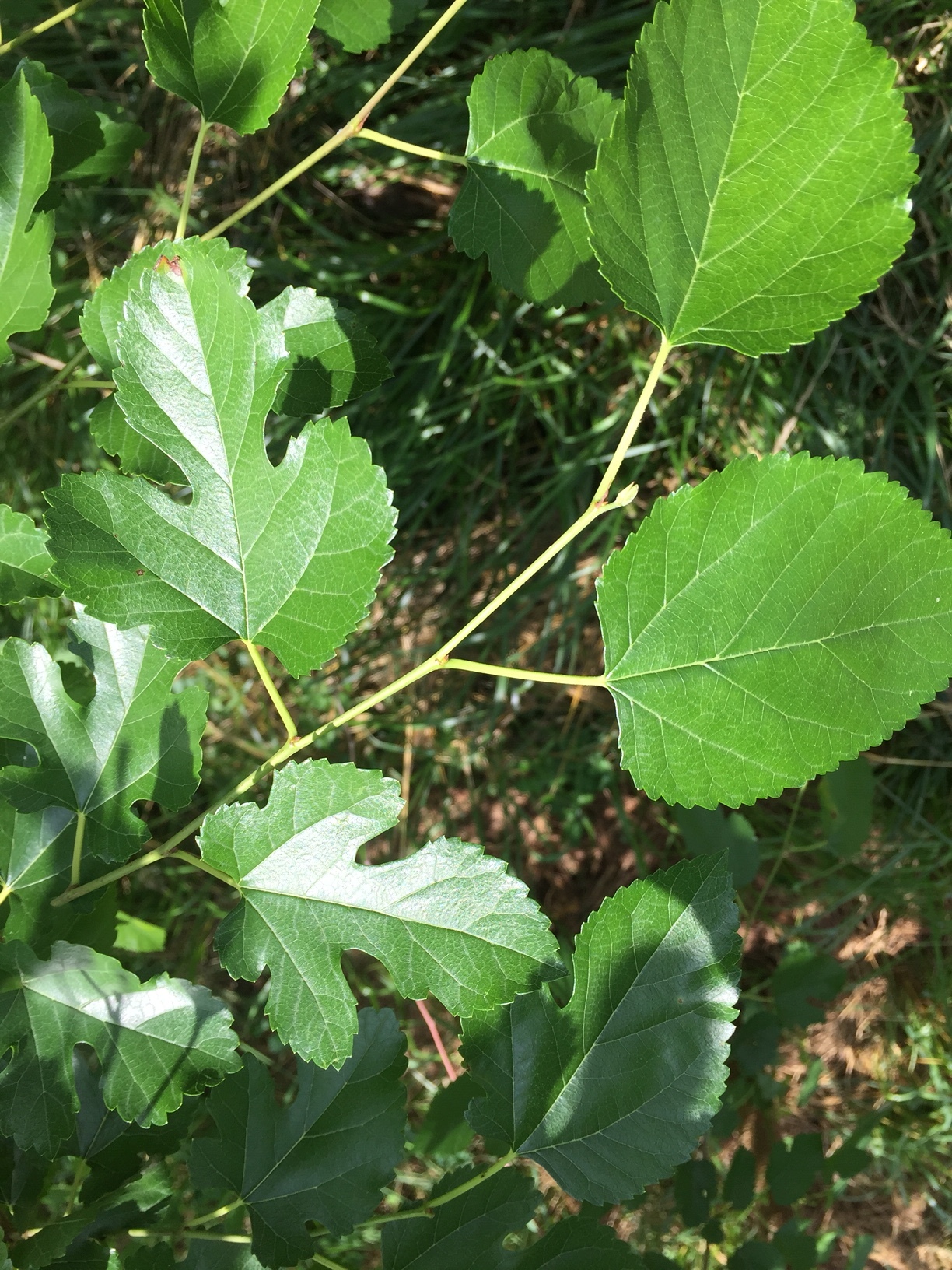Mulberry






Mulberry
Morus spp.
Plant for their fast growth, their abundant gifts of food and fodder, their queer adaptability, and their love for riparian areas!
Hardy from Zones 5-9. 35-50 feet, 20-40 wide. Plant several for good pollination!
We excitedly shake Mulberry trees every June along the creeks we tend. One of us climbs into the twisted reddish-brown branches and the other holds open a blanket to catch the shower of sweet fruits, high in Vitamin C, iron, and antioxidants. Fruit is delicious fresh, cooked into jam, fermented into wine, or turned into shrub (a cordial made with vinegar). Friends run chickens underneath the trees to eat fallen fruit and leaves, both of which are also a great feed to fatten pigs. Each Mulberry fruit is actually multiple tiny fruits clustered together, each blossomed individually from separate flowers.
Suckers and seedlings pop up along the streambank, and we end up leaving a lot of them when we thin the woodlands. Some we might let mature for more fruit, but we'll prune and coppice most for incredible high-heating and long-lasting firewood, and to encourage abundant leafy growth for mulch and animal fodder, a common practice in countries like India and Japan, where researchers report Morus leaf meal increasing vitamin K and beta-carotene in chicken eggs. Mulberry leaves are 15-28% protein, high in minerals, and easily digestible (over 80%), which could all come in handy when pastures dry up in droughts. Fresh leaves also make a decent salad for humans, and Cherokee have used leaves for a medicinal tea to treat dysentery and difficult urination. China has an ancient history of feeding Mulberry leaves to silk worms for their spinning brilliance.
Mulberry loves riparian areas, and we often see them growing under Sycamore, Silver Maple, and Ash. They also show up in pastures, field edges, and fencerows where birds drop the seeds. Mulberries hold incredible diversity because they can either be monoecious (which means one tree has both male and female flowers) or dioecious (which means one tree has male, or staminate, flowers and another tree has female, or pistillate, flowers), and some dioecious Mulberry trees change sex from one to the other. An incredible example of the queerness of nature!
We propagate our Mulberry from seeds collected from large sturdy trees with excellent flavor and healthy growth. The parent trees are certainly crosses of Morus rubra, the native Red Mulberry, and Morus alba, White Mulberry, originally from northern China and brought to this continent to feed a colonial silk industry.